Children Mike Grant Height 1.91 m | Name Bud Grant | |
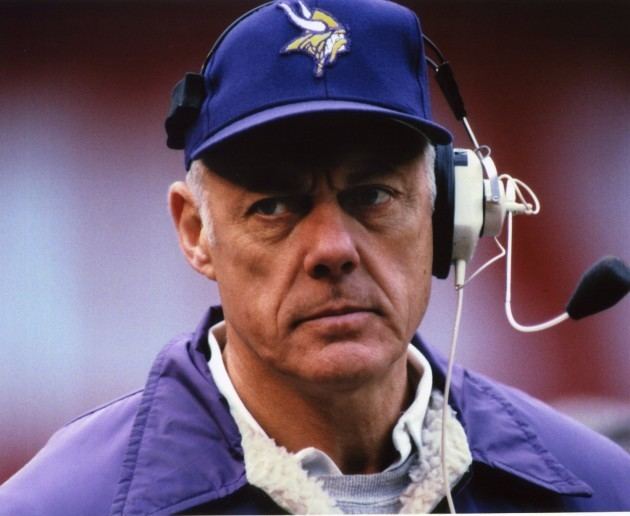 | ||
Date of birth: (1927-05-20) May 20, 1927 (age 88) NFL draft: 1950 / Round: 1 / Pick: 14 Regular season: CFL: 102–56–2 (.644)NFL: 158–96–5 (.620) Spouse Patricia Bellew (m. 1950–2009) Parents Bernice Grant, Harry Peter Sr. Similar People Fran Tarkenton, Carl Eller, Jim Marshall, Jerry Burns, Alan Page Profiles | ||
Bud grant former nfl head coach
Harry Peter "Bud" Grant, Jr. (born May 20, 1927) is a former coach and player of American football and Canadian football. Grant served as the head coach of the Minnesota Vikings of the National Football League (NFL) for eighteen seasons; he was the team's second (1967–83) and fourth (1985) head coach. Before coaching the Vikings, he was the head coach of the Winnipeg Blue Bombers of the Canadian Football League (CFL) for ten seasons, winning the Grey Cup four times. Grant is the most successful coach in Vikings history, and the third most successful professional football coach overall (behind Don Shula and George Halas), with a combined 290 wins in the NFL and CFL. Grant was elected to the Canadian Football Hall of Fame in 1983 and to the Pro Football Hall of Fame in 1994. He was the first coach in the history of professional football to guide teams to the Grey Cup and the Super Bowl.
Contents
- Bud grant former nfl head coach
- Bud grant s hall of fame induction 1994 news coverage
- Childhood
- Family
- High school and college
- Professional basketball
- Professional football
- Winnipeg Blue Bombers
- Minnesota Vikings
- Post coaching career
- References
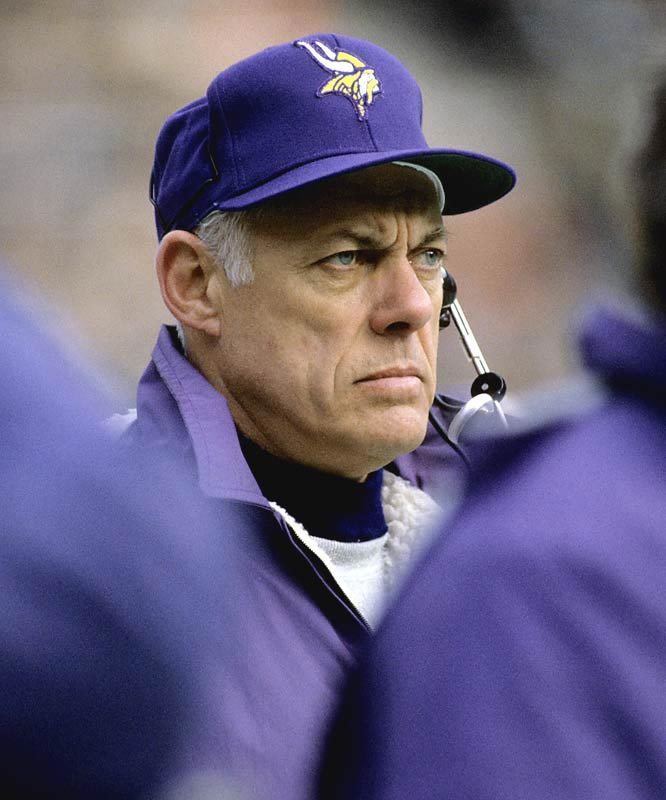
Grant attended the University of Minnesota and was a three-sport athlete, in football, basketball, and baseball. After college, he played for the Minneapolis Lakers of the National Basketball Association (NBA), the Philadelphia Eagles of the NFL, and the Winnipeg Blue Bombers of the CFL.
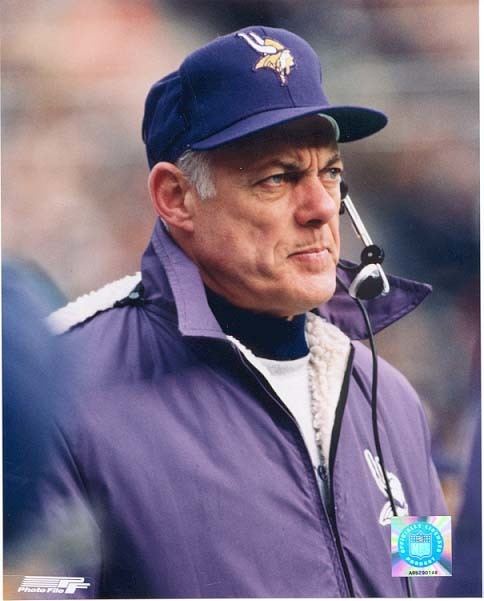
On October 23, 2014, a statue of Grant was unveiled in front of the Winnipeg Blue Bombers' new stadium, Investors Group Field.
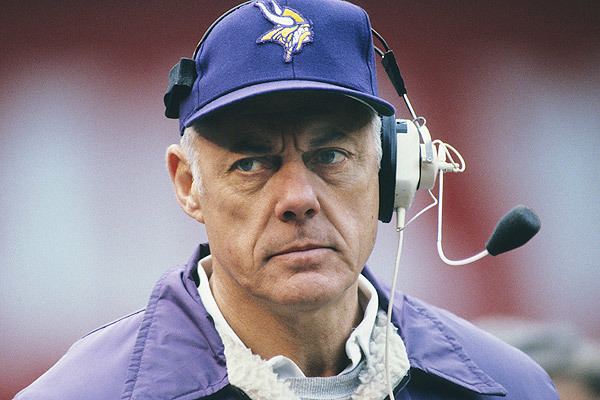
Bud grant s hall of fame induction 1994 news coverage
Childhood
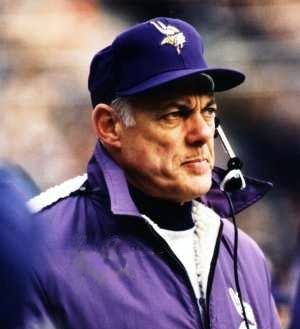
Bud Grant was born on May 20, 1927, in Superior, Wisconsin to Harry Peter Sr. and Bernice Grant. His mother called him "Buddy Boy", which later became "Bud". As a child, Grant was diagnosed with poliomyelitis and a doctor suggested he become active in sports to strengthen his weakened leg muscles over time. He started with baseball, adding basketball and football as he got older. Due to a lack of organized school teams, he arranged football games between neighborhoods and contacted kids from other schools to participate. During weekends, he would spend time outdoors alone hunting rabbits. In his late teens and college years, he played organized baseball in Minnesota and Wisconsin.
Family
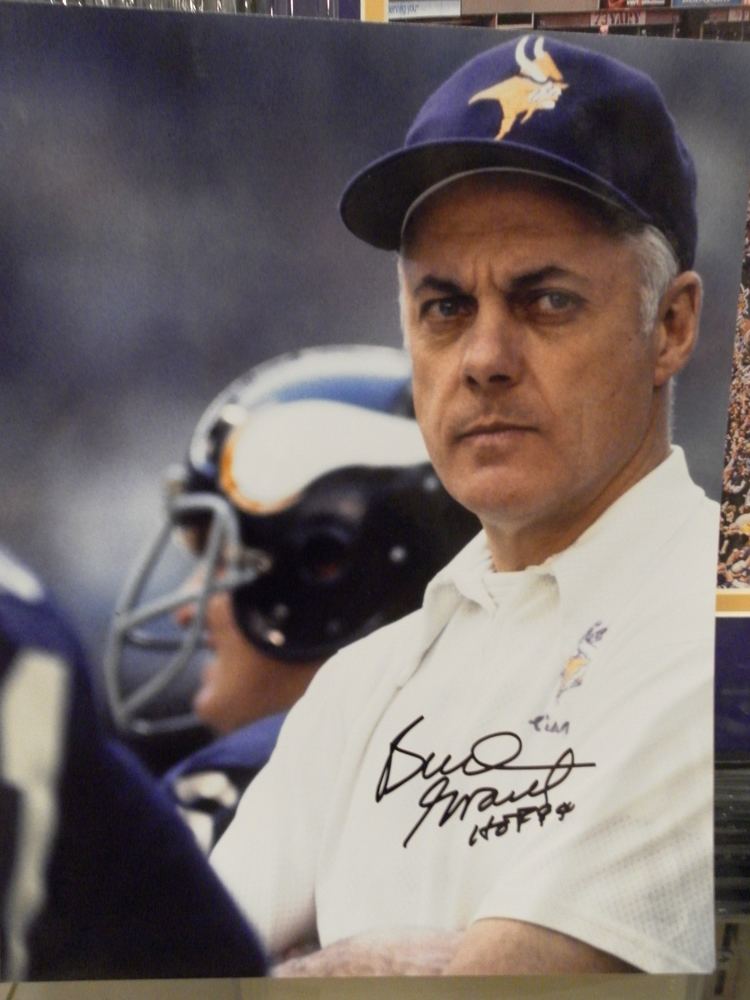
Bud married Pat (formerly Patricia Bellew; born March 28, 1927) in 1950, and they had six children. Their son Mike Grant has been the football head coach for Eden Prairie High School in Eden Prairie, Minnesota since 1992. Mike Grant has coached Eden Prairie to ten state championships since 1996. Bud Grant's grandson Ryan Grant was a quarterback and linebacker at Eden Prairie and played at the University of Minnesota (2008–2012) as a linebacker. Bud's granddaughter Jenny is married to former NFL quarterback Gibran Hamdan. Pat Grant died in 2009, of Parkinson's Disease.
High school and college
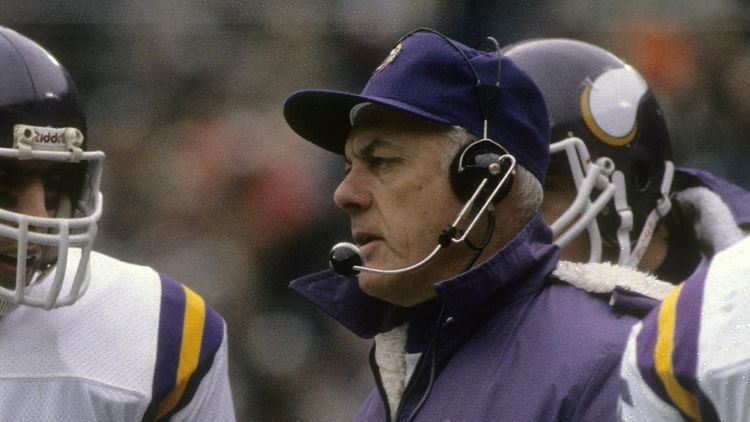
Grant played football, basketball, and baseball at Superior Central High School (Wisconsin). He graduated from high school in 1945 and enlisted in the Navy during World War II. He was assigned to the Great Lakes Naval Training Station in Illinois and played on the football team coached by Paul Brown. Using an acceptance letter from the University of Wisconsin–Madison to be discharged from the service, Grant decided to attend the University of Minnesota instead. He was a three-sport, nine-letterman athlete in football, basketball, and baseball for the Minnesota Golden Gophers, earning All-Big Ten honors in football twice.
Professional basketball
After leaving the University of Minnesota, Grant was selected in both the NFL and NBA Draft. He was selected in the first round (fourteenth overall) of the 1950 NFL Draft by the Philadelphia Eagles and fourth round (forty-second overall) selection of the Minneapolis Lakers in the 1950 NBA draft. He played thirty-five games during the 1949–50 NBA season and signed with the Lakers for the 1950–51 NBA season. He chose to continue his basketball career with the Lakers because they were local and because he was offered a raise to stay for the season. Grant's close personal friend, Sid Hartman, was the Lakers' general manager, which may have influenced his decision to remain with the team. He averaged 2.6 points per game in his two seasons as a reserve with the Lakers and was a member of the 1950 championship team.
Professional football
After two seasons in the NBA, Grant decided to end his professional basketball career. He contacted the Philadelphia Eagles of the NFL and agreed to play for the team during the 1951 NFL season. In his first season with the Eagles, Grant played as a defensive end and led the team in sacks (an unofficial statistic at the time). He switched to offense as a wide receiver for his second season with the club and ranked second in the NFL for receiving yardage, with 997 yards on fifty-six catches, including seven touchdowns.
Grant's contract expired at the end of the 1952 NFL season and the Eagles refused to pay him what he thought he was worth. The Winnipeg Blue Bombers of the CFL had been interested in Grant while in college. Grant left for Winnipeg, Manitoba, Canada in 1953 and became the first professional player to "play out his option" and leave for another team. He played for the Blue Bombers until 1956 as an offensive end and was named a Western Conference all-star three times. He led the Western Conference in pass receptions for the 1953, 1954, and 1956 seasons and receiving yards for the 1953 and 1956 seasons. He also holds the distinction of having five interceptions in a playoff game, played on October 28, 1953, which is a CFL record. The Blue Bombers played for the Grey Cup in 1953, but lost to the Hamilton Tiger-Cats in the 41st Grey Cup game.
Winnipeg Blue Bombers
Blue Bombers management decided that they needed a new coach prior to the 1957 season. On January 30, 1957, Grant accepted the Blue Bombers head coaching position after impressing management with his ability to make adjustments on offense and defense as a player. Club president, J.T. Russell, thought that Grant could coach even though nobody else did. Grant would remain the head coach of the Blue Bombers until 1966. At age 29 (he would be 30 by the time he coached his first game), Grant became the youngest head coach in CFL history.
During his ten seasons as head coach in Winnipeg, he led the team to six Grey Cup appearances, winning the championship four times in 1958, 1959, 1961, and 1962. He finished his Blue Bombers coaching career with a regular season record of 105 wins, 53 losses, and two ties and an overall record of 122 wins, 66 losses, and 3 ties. Grant was the CFL Coach of the Year in 1965. Grant took on additional responsibilities as a club manager between 1964 and 1966. Max Winter, the Minnesota Vikings founder, contacted Grant in 1961 and asked him to coach the new NFL expansion team. Grant declined the offer and remained in Winnipeg until 1967 when Winter and General Manager Jim Finks were successful in luring Grant to Minnesota.
Minnesota Vikings
Grant continued his coaching success in the NFL as he took over from original coach, Norm Van Brocklin. Over his tenure as Vikings head coach, Grant was known for instilling discipline in his teams and displaying a lack of emotion during games. He believed that football is a game of controlled emotion and teams would not follow the coach's lead if he were to panic or lose his poise during the course of a game. He required his team to stand at attention in a straight line during the entire national anthem played before the game and even had national anthem practice. Grant required outdoor practice during the winter to get players used to the cold weather and would not allow heaters on the sidelines during games.
Grant and Finks orchestrated a rare trade in between leagues, which brought Joe Kapp from the British Columbia Lions to the Vikings. In return, the Vikings sent Jim Young, a Canadian born player, back to his native country.
In his second year, Grant led the team to a divisional championship and his first NFL playoffs appearance. In 1969, he led the team to its first NFL Championship and their first appearance in the Super Bowl. The Vikings lost in Super Bowl IV to the American Football League champion Kansas City Chiefs. Prior to the 1970 season, Minnesota released Joe Kapp. After starting Gary Cuozzo at quarterback in 1970 and 1971, the Vikings re-acquired Fran Tarkenton prior to the 1972 season. During the 1970s, the Vikings would appear in three more Super Bowls (VIII, IX, and XI) under Grant and lose each one, but he was the first coach to lead a team to four Super Bowls. He retired after the 1983 NFL season and was succeeded by Les Steckel, who led the team to a 3-13 record the following season. Steckel was fired as head coach after the 1984 season and Grant returned as coach for the Vikings in 1985. After one season where he returned the club to a 7-9 record, he stepped down again. Grant retired as the eighth most successful coach in NFL history with an overall record of 161 wins, 99 losses, and 5 ties. As of 2014, he also remains the most successful coach in Vikings history. During his tenure with the Vikings, he led the Vikings to four Super Bowls, eleven division titles, one league championship and three NFC conference championships.
Post-coaching career
After retiring, Grant became a less prominent public figure and focused on hunting and fishing and supporting environmental reforms. He has been a spokesperson against Native American hunting and fishing treaty rights in Minnesota. In 1993, Grant's efforts resulted in a death threat. In 2005, he spoke at a Capitol rally in Minnesota for the conservation of wetlands, wetland wildlife, and water. Grant addressed 5,000 supporters, saying, "In this legislative session, we want to see some action. It's more important than any stadium they could ever build in this state."
Grant is still listed as a consultant for the Vikings and maintains an office at the team's headquarters in Eden Prairie.
